Vaasan Palloseura (VPS) have enjoyed a stellar start to the 2024 Veikkausliiga season. After eight matches, they sit third in the table with 16 points, level with Kuopion Palloseura in first and Ilves in second, having lost just one game so far. This has been one of their best starts to a campaign over the last decade, during which they have established themselves as a consistent top-flight presence.
However, most of VPS’ campaigns have seen them finish in the bottom half of the table, with the club even suffering relegation to the second tier in 2019. They finished sixth in 2020 before getting promoted to the Veikkausliiga the following year, finishing third in the regular season before moving to the top of the standings in the playoff round.
Their first season back in the top flight saw them finish 10th in the regular season and second in the relegation playoffs. An unprecedented improvement under Jussi Nuorela, who has been with the club since 2021, led to VPS finishing fourth in the regular season last year and third overall.
This time around, they look set to be involved in a title challenge, and a key reason for this has been the acquisition of young striker Mads Borchers from Swedish side Varbergs BolS ahead of the campaign. In eight league games, Borchers has notched up five of his side’s 15 goals while also providing an assist. He seems to have fit seamlessly into Nuorela’s system and could be the latest talent to come out of Denmark.
This scout report will perform some tactical analysis on Borchers’ strengths, weaknesses, and potential to understand his fit in VPS’ tactics this season.
Player Profile
Borchers, born June 18, 2002, has only just taken his first steps in professional football but has already shown more than just a glimpse of his potential. The youngster began his youth career with SUB Sönderborg before moving to Esbjerg’s youth side in 2017. Two years later, he moved to their U19 side, where he shone, scoring 18 times in 41 matches, earning himself a spot in their senior side.
Borchers played three games for Esbjerg before being loaned to 07 Vestur in the Faroe Islands in January 2022. He impressed once again at Vestur, netting 15 times and laying out six assists in 28 matches. Upon returning to Esbjerg, he was sold to another top-flight team in HB Tórshavn in January 2023 and showcased his all-around ability there as well, scoring eight goals and providing seven assists in 21 matches and lifting the Faroese Cup.
In July, he moved to Varbergs, where he hit a bit of a wall, netting just once in 16 appearances. VPS came calling for his signature earlier this year and signed him on a one-season deal.
As his heatmap from the season so far shows, Borchers typically operates in central areas in and around the box. However, he has also shown a tendency to play from out wide and drop deeper, which shows in his stats as well.
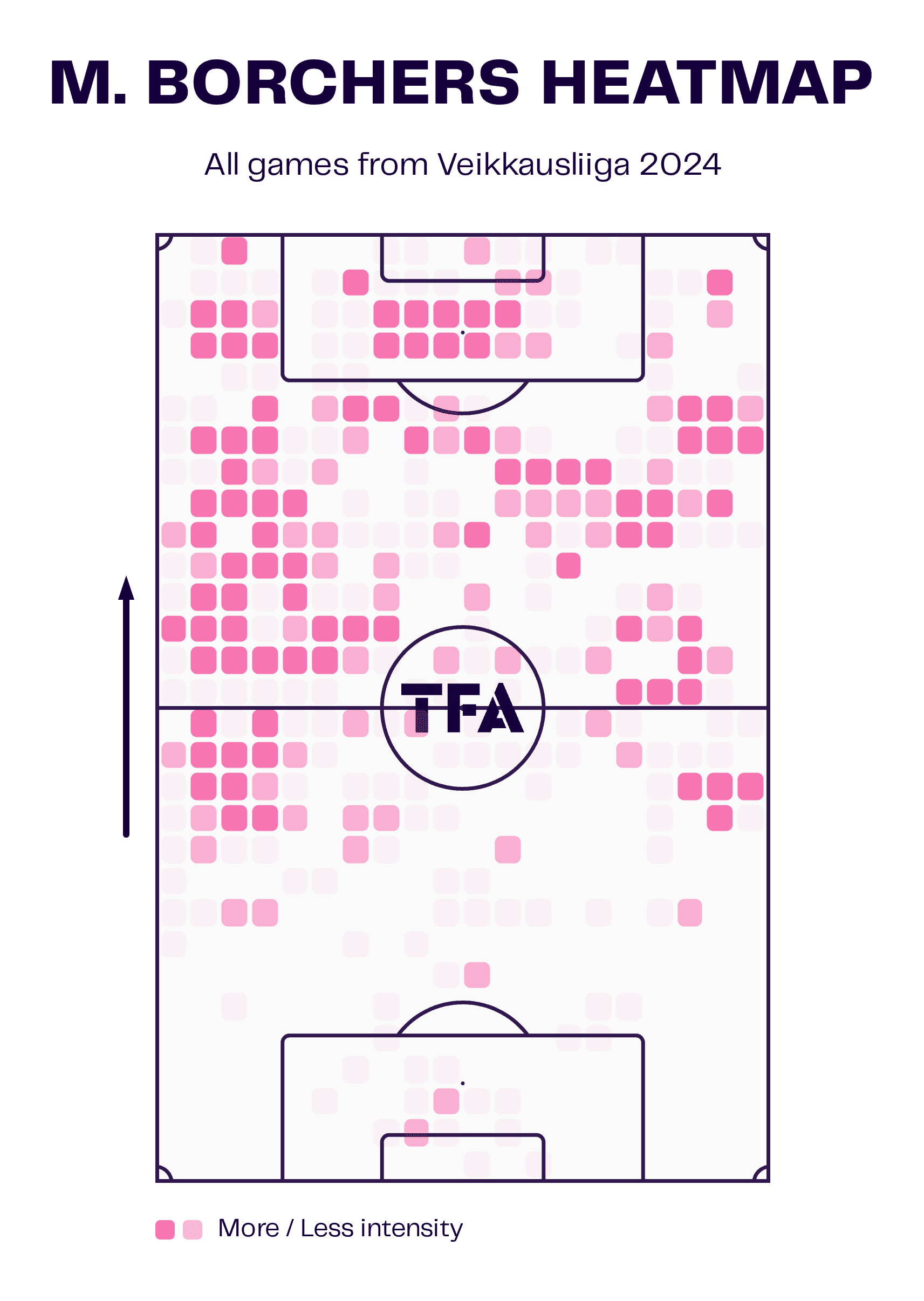
Dribbling
Before we get to his goalscoring, let’s take a look at some of Borchers’ other strengths, one of which is his dribbling.
In the league this season, the Dane has attempted 3.48 dribbles per game. While this is slightly below his career average of 4.46, his success rate of 57.1% is higher than his career figure of 52.3%. He wins 1.5 fouls per game, which could be improved, but his ability to get past his man is a crucial element of VPS’ attacking play, given that the team tries to force turnovers with its press (9.46 passes per defensive action) and has enjoyed success on the counter (50.7% of 0.75 counterattacks per game end in a shot).
As a result, Borchers’ ball reception and dribbling are both critical components of their attempts to break down an opponent’s block. In the sequence below from VPS’ 3-0 win over Lahti, he receives the ball on the left in position to turn and quickly charge towards the box. His two-footedness plays in his favour as his reception is with his left, but he’s able to change direction and dribble it forward with his right.
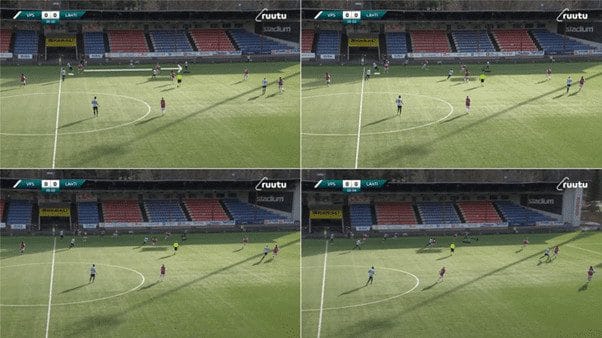
What also stands out in this sequence is Borchers’ game sense. He initially begins the play in a more central area before recognizing and moving into the open space on the left, noticing a gap between two defenders. Similarly, he showcases astute awareness of how to generate space when he is on the ball, as in the sequence below. He dribbles past three defenders and draws a fourth towards him before switching the ball to the right, where his teammate has acres of space.
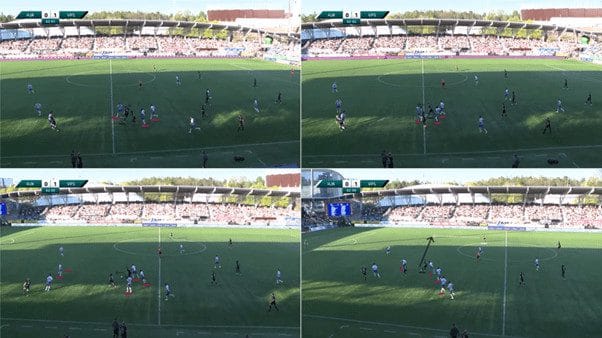
Link-up Play
While his overall passing needs some work, Borchers is also adept at link-up play. He has a willingness to drop back, receive passes from his defence and spread it out wide, which has helped VPS’ approach play this season. Overall, the youngster has received 13.78 passes per game this season, with quite a few of these in front of the opposition defence with his back to goal or on in the half-space on the left flank.
One example of his link-up play is in the sequence below from his side’s 3-1 defeat to Kuopion. As the pass comes in from the centre-back, Borchers displays his ambi-pedal ability again, taking a touch with his right towards the centre circle before passing it with his left to a runner on the left flank, opening up an opportunity for his side. Notice how, in the final tile, Borchers has already begun his run towards the box as well.
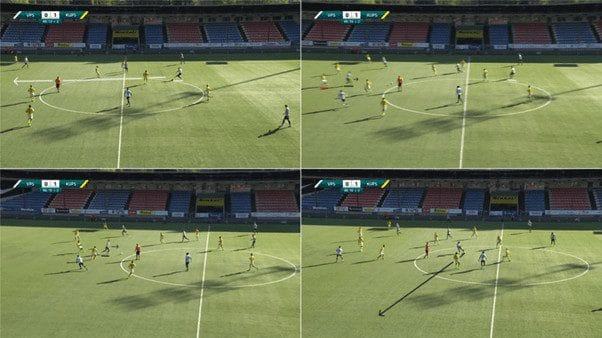
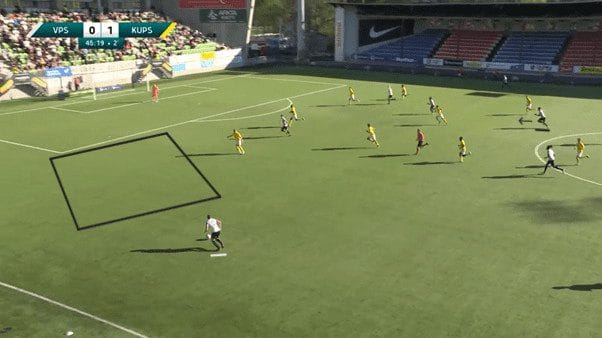
Similarly, in the clip below, Borchers drops too close to the halfway line again on the right flank to play a pass back to midfield. While the pass from his teammate is the wrong one (in-field) and is intercepted, the move is another great illustration of what he offers with his back to goal.
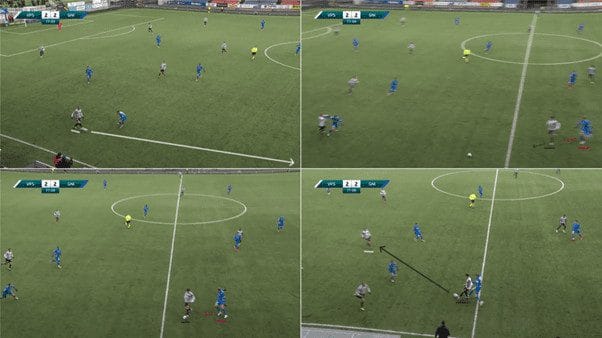
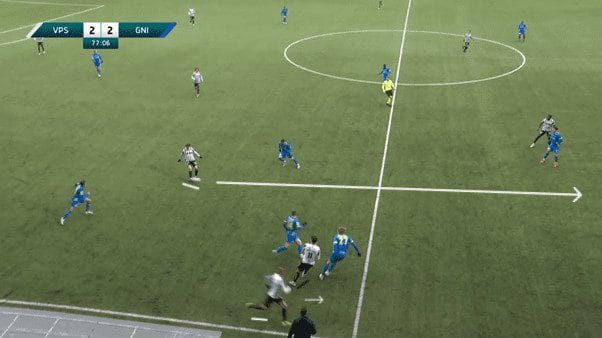
Goalscoring
As explained already, Borchers’ bread and butter is in goalscoring. His five goals in eight games makes him the second-highest scorer in the league this season (one behind AC Oulu’s Ashley Coffey), while he’s done so from an xG of 5.03. Three of his goals have come from the penalty spot, an area he has excelled in, as in the case below from their match against HJK Helsinki.
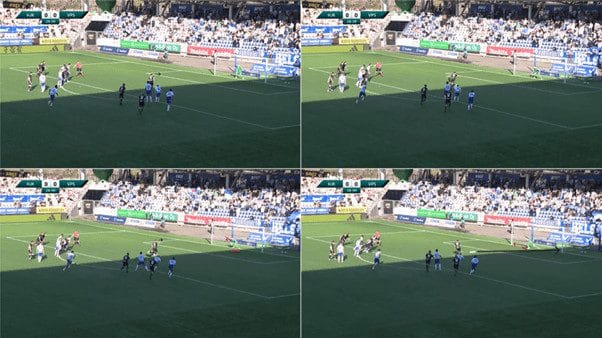
While he doesn’t have much variety in his penalties, often going for the powerful strike with his left after a short run-up, it’s effective.
From open-play, Borchers is just as good at finishing with either foot, thanks to his two-footed ability, as mentioned earlier. In the sequence below, he collects the ball on the edge of the box following a clever backheel from his teammate before firing across the goalkeeper with his right foot.
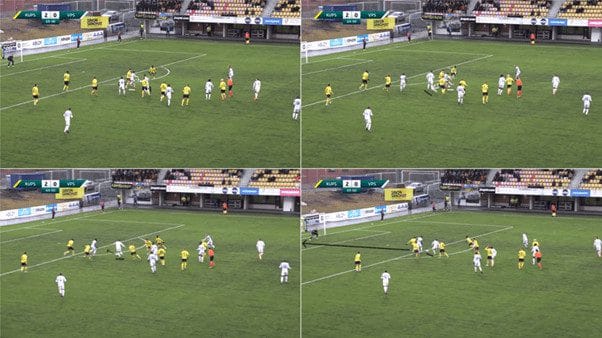
Similarly, his positioning in the move below sees him receive the ball on the left and then lash home at the goalkeeper’s near-post, with his shot power standing out.
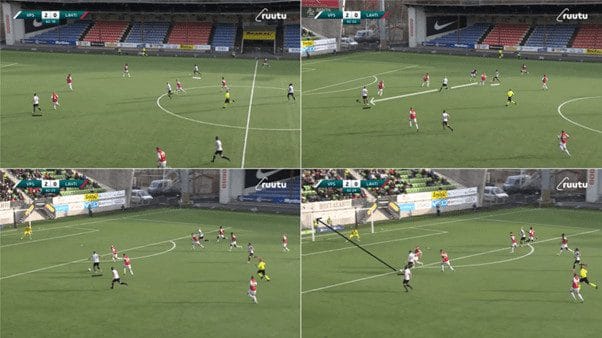
While he is yet to score a header this season, he did score a couple during his stint at other clubs, including this one below for Varbergs. As the cross is floated in, he gets just an inch of space away from his marker and uses his neck muscles to generate power on the ball. Notice how he seems to be facing the other way when he strikes it, getting enough power and placement to guide it underneath the goalkeeper.
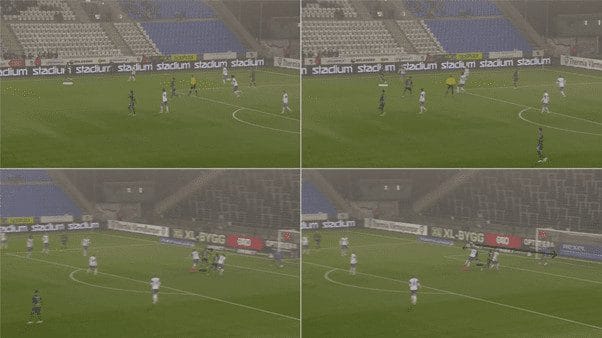
Borchers’ positioning and ability to strike with both feet and his head mean he has incredible goalscoring potential, which has been evident over the course of his short career so far. With time, he will be expected to get even better in these regards.
Areas to work on
Borchers, like many young centre-forwards, still needs to improve his passing and decision-making, both of which should happen with time.
Despite being a forward who often drops back to assist link-up play and is willing to get across different areas of the pitch to receive and play passes, he completes only 72.5% of his 20.73 passes per game in the league this season (though his long passing accuracy of 66.7% on 0.74 attempts per game is encouraging). His forward passes can, at times, be unnecessarily risky, as evidenced by his 51.3% accuracy on a very low 4.84 attempts per game.
The low volume could be attributed to him playing with his back to goal, but both he and the team need to work on increasing that number. Borchers’ work will once again be with regards to his accuracy, especially in passing to the final third (1.61 attempts, 61.5% accuracy) and penalty box (2.11 attempts, 41.2% accuracy). Despite playing out wide, his crossing has been extremely poor, with a meagre 14.3% of his 1.74 crosses per game reaching a teammate.
His shooting can also occasionally be evidence of his questionable decision-making, as in the case below, where he shoots off-balance when taking a touch to compose himself or playing a pass to the runner on the right would have been the better option.
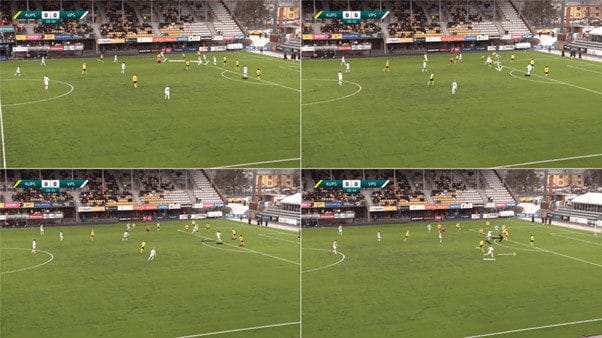
A close look at the bottom-right tile shows that his planted foot is unstable, which results in his shot lacking venom or control and ultimately hitting the man right in front of him.
What’s worth noting here, though, is that he reacts quicker than the two defenders closest to him to meet a flick-on by his teammate, which indicates a feel for the game and that he senses opportunities. However, the key in these situations – and this is likely to come with coaching and as he plays more games – is to make the most of his situations. As a centre-forward who attempts a high volume of shots and is confident with both feet, he will instinctively attempt these shots, but he will have to realise that patience or the pass is, on occasion, the better option.
Conclusion
As our analysis depicts, Mads Borchers is undoubtedly a superb talent and does his job, which is to get goals, admirably well. A solid penalty-taker and box scorer, he can also strike the ball powerfully with either foot, making him a unique proposition for defenders to deal with. Like any other young forward, Borchers has to work a little more on his passing and decision-making, but given he is only 21, he will undoubtedly improve on these fronts and is a name to watch out for in the near future.





Comments